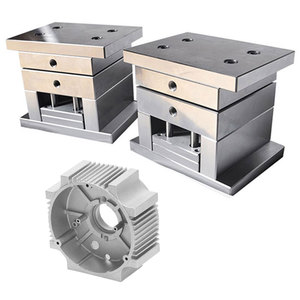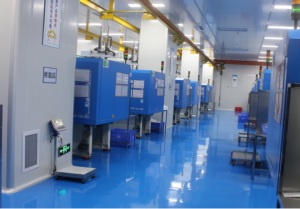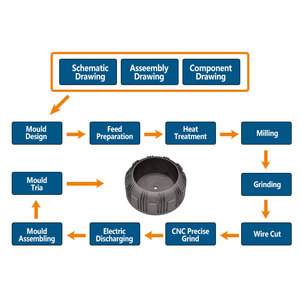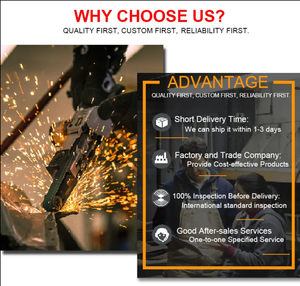
All categories
Featured selections
Trade Assurance
Buyer Central
Help Center
Get the app
Become a supplier

(94 products available)








































Cylinder head casting moulds utilize variegated materials such as cast iron, steel, aluminum alloys, magnesium alloys, and rubber, and each is selected based on particular requirements, such as durability, corrosion resistance, and thermal properties.
Cast Iron
Renowned for its strength and durability, cast iron is ubiquitously used for creating casting cylinder heads. The material's superior wear resistance and ability to retain shape over time ensure precision in reproduction, making it ideal for high-performance applications. Its ability to withstand elevated engine temperatures and pressures further elevates its usability. When used in a mould, cast iron enhances long-term durability, as the material can endure multiple casting cycles without significant degradation.
Steel Alloys
Typically used in high-stress environments, steel alloys provide exceptional tensile strength and rigidity. In the context of cylinder head casting, steel moulds significantly prolong lifespan even under rigorous usage. When hardened, steel moulds are able to withstand repeated high-temperature castings.
Aluminum Alloys
Lightweight and extensively used for making cylinder heads, aluminum alloys in casting are beneficial for reducing vehicular weight while maintaining optimal thermal conductivity and resistance to corrosion. Further, aluminium alloy moulds facilitate quick heat dispersion, which is critical in maintaining engine efficiency. Commonly, such alloys include 7075 series aluminum, which provides high strength and wear longevity.
Rubber and Silicone Composites
Less frequently, rubber and silicone composites are utilized for smaller or more intricately detailed cylinder head casting moulds, which enable flexibility. This adaptability aids in capturing fine details. The primary application of these materials is in low-volume production or in creating replicas.
Magnesium Alloys
Although magnesium alloys are less common, they are occasionally selected for their lightweight yet sturdy properties. Such alloys impark thermal resistance, rendering this material applicable for casting cylinder heads, which are critical for managing engine heat. Magnesium moulds hold a competitive edge in engine applications requiring efficient heat management.
The aspect of a cylinder head makes it an indispensable tool for producing key automotive components with precision, as well as for various practical applications as an industrial staple in mechanical and automotive domains.
Automotive Industry
Casting moulds for cylinder heads are used in the automotive sector to produce these crucial parts at scale, catering to divergent engine designs. It is in this context that a casting cyliner head mould brings about precision and consistency in the formation of the engine combustion chamber and valve train sections. Rarely, the precision of the mould directly influences the engine performance. Therefore, quality moulds lead to superior thermal management, which enhances overall engine efficiency.
Aerospace Applications
As a crucial component, the cylinder head casting is utilized in the aerospace industry. Its lightweight design, combined with its durability, makes it perfect for use in aircraft engines, which require efficient operation without contributing excess weight. Hence, in aerospace, cylinder head casting aids in attaining fuel efficiency, which is instrumental for enhanced aerodynamics.
Marine Engineering
Commonly, moulds for cylinder head casting are utilized in marine engines, withstanding high pressures and corrosive saltwater environments. Marine vessels rely on reliable power systems. Thus, high-quality cylinder heads produced from casting moulds support this reliability by improving engine longevity and performance. Additionally, often designed to resist corrosion, the materials used in the casting of the mould, such as aluminum or iron, provide extended durability against marine conditions.
Industrial Machinery
Noteworthy, cylinder heads are integrated into industrial engines and generators, contributing to operational efficacy. In heavy machinery applications, such components management heat and gas emission. Therefore, quality casting moulds directly impact the dependability and effectiveness of these industrial systems.
Research and Development
In R&D settings, casting moulds for cylinder heads are indispensable for testing new engine designs or materials. Thus, engineers can experiment with divergent configurations to optimize performance or fuel efficiency. Normally, these moulds are utilized in developing innovative technologies such as hybrid or electric propulsion systems, contributing to future automotive advancements.
The consideration of various factors when purchasing a cylinder head mould ensures the ideal selection for business needs to achieve optimal production results.
Material of the Casting Mould
The material used to make the casting mould considerably affects the quality of the outcome. Business owners should settle for cast iron, steel, or aluminum for durable and solid options. Again, each material type affects the heat and stress the mould can handle. Thus, it is pertinent to purchase manufacturers' recommendations for the materials to use with their product.
Type of Cylinder Head
The purpose of the cylinder head casting mould and the type of engine should be considered. Depending on the design and specifications, a buyer should purchase a casting mould that is compatible with different types of cylinder heads. For diverse needs, such as petrol or diesel aircraft engines, there are also OEMs or replacements for existing parts.
Production Volume
The expected production volume should be considered as each material and design have different scalability degrees. For smaller or more serious projects, an infrequent run of the mould can achieve detailed, high-quality work. In contrast, for larger productions, a more robust, simplistic area is required.
Budget and Cost-Effectiveness
Consideration of the expenses associated with the casting mould is essential. Business owners should look for the most ideal, reasonable options. They also need to factor in the quality so that they do not have to replace or repair the casting mould frequently. Any potential long-term savings in operational costs must also be considered.
Supplier Reputation
Buyers have to ensure they are purchasing from qualified, experienced suppliers. They should read reviews and ask other industry players for referrals. This increases the chances of the supplier providing a casting design that meets quality standards.
A cylinder head timing belt casting has several advantages, such as producing quality products, providing engineers with a high level of freedom, and allowing for sustainable procedures. Below are the benefits.
Production Efficiency
Casting moulds promote the production of cylinder heads at scale, which signifies that more heads can be produced in less time. Normally, this efficiency is very important in industries where demand is huge. For the automotive or aerospace industry, for instance, it has a direct effect on operational costs and time.
Design Flexibility
Particularly in terms of materials used, the casting mould allows for a wide range of design possibilities. This makes it easy to create complex geometries that are normally hard to achieve with various processes. This adaptiveness enables innovation, as manufacturers can develop lighter, more efficient cylinder heads that significantly improve performance.
Consistency and Precision
The prominent advantage of this technique is that it achieves higher uniformity. This implies that every cylindrical head mould will be produced in approximately the same way. Henceforth, this repeatability is able to ensure that as products are manufactured, their quality remains unchanged. Thus, as a result, this is vital in areas where exact fit and function are necessary.
Material Utilization
Usually, casting moulds are adaptable to various materials, such as metals, including aluminum and iron. Thus, this versatility enables the selection of materials that are best suited to particular applications. Materials with better thermal resistance, for instance, can be used to make a better cylinder head that will work better in an engine, improving performance and durability.
Cost-Effectiveness
In large production runs, unit costs tend to decrease. This is because of the economics of scale. When a cylinder head casting mould is used, in particular, fixed costs per unit go down, thus improving overall cost structures. This can very much benefit industries that are highly competitive and that require finely tuned production costs.
Waste Reduction
Although it is manufactured through processes, the casting typically makes use of more efficient material than most. The reason is that advanced technologies such as 3D printing in the production of Production Moulds Eased material recovery through designing such moulds. Therefore, this efficiency decrease gives rise to lower wastage, ensuring that such practices are created with sustainability in mind. For industries that have a negative impact on the environment, this reduces impact.
As a business buyer, it is guileless to have a couple of questions regarding a cylinder head castingmould. Here are some FAQs to consider:
What is a cylinder head casting mould?
A cylindrical head coming with a casting mould referred to as a casting mould for a cylindrical head is a device used to create cylindrical heads. The casting mould can be fabricated from a variety of materials, such as steel, iron, or even alloys. The ideal material for each application is determined by the thermal and mechanical properties required.
How long do casting moulds for cylinder heads usually last?
A range of factors, such as usage frequency and the type of material being cast, usually determine the life span of such moulds. Ideally, high-quality materials and maintenance prolong the life span of moulds in a great way.
Can casting moulds for cylinder heads be used with different materials?
Yes, such casting moulds are adaptable and can be used for several materials. These include metals such as aluminum, cast iron, or more exotic alloys like magnesium or nickel. These materials have various beneficial properties that can be easily leveraged for engine performance.
How often should a casting mould for a cylinder head be maintained?
Maintenance is very essential for this type of equipment. Ideally, the maintenance should occur after every operational session. However, this depends on the extent to which the mould is actually being used. Regular inspections, cleaning, and repairs, if necessary, will help prolong its life. Also, maintenance enhances the quality of products manufactured.
Are there new developments in cylinder head casting moulds?
Just like many other industrial practices, the casting moulds have received technological innovations, such as the coming in of 3D printing. This plays a huge role in creating more complex and lighter designs for casting moulds, as well as improving the materials.